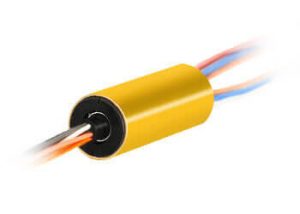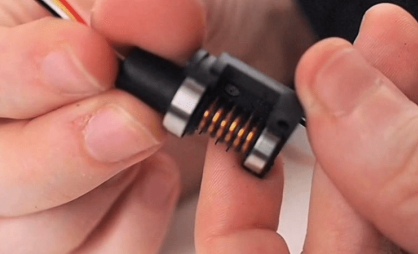A miniature slip ring is a compact, high-performance electrical component that is designed to transmit power, signals, or data between two rotating parts. As the name suggests, a miniature slip ring is smaller in size than a standard slip ring, making it ideal for applications where space is limited.
- What is a Miniature Slip Ring
- What Are the Characteristics and Advantages of Miniature Slip Rings
- How to Choose the Right Miniature Slip Ring
What is a Miniature Slip Ring
Miniature slip rings typically consist of a set of conductive rings, which rotate around a stationary brush block. The rings and brush blocks are made from high-quality materials that ensure a reliable electrical connection between the rotating and stationary parts. The rings can transmit electrical power, signals, and data across the rotating interface, allowing for continuous rotation without the need for any cable twists or tangles.
Miniature slip rings are commonly used in a range of industries, including medical devices, robotics, aerospace, and defense. They are ideal for applications where size and weight are critical, such as in handheld medical devices or small drones. Miniature slip rings offer several advantages over traditional slip rings, including their compact size, low torque and low electrical noise, and their ability to transmit a variety of signals and data types.
Overall, miniature slip rings are a crucial component in many applications, allowing for reliable and continuous electrical connections in a compact and lightweight package.

What Are the Characteristics and Advantages of Miniature Slip Rings
Miniature slip rings are compact and high-performance electrical components that are used to transmit power, signals, or data between two rotating parts. Here are some of the characteristics and advantages of miniature slip rings:
Compact Size: Miniature slip rings are smaller in size than standard slip rings, making them ideal for applications where space is limited. They are often used in small, portable devices such as medical equipment, robotics, and surveillance equipment.
Low Torque and Electrical Noise: Miniature slip rings are designed to have low torque and low electrical noise, which helps to reduce wear and tear and improve the reliability and longevity of the slip ring.
High-Speed Capability: Miniature slip rings can transmit signals and data at high speeds, making them ideal for applications that require high data transfer rates, such as in aerospace and defense.
Multiple Signal Types: Miniature slip rings are capable of transmitting multiple signal types, including power, signals, and data. This versatility makes them an ideal component for applications where multiple signal types need to be transmitted.
Customization: Miniature slip rings can be customized to meet the specific requirements of an application, such as the number of conductive rings and the size of the slip ring.
Low Maintenance: Miniature slip rings are designed to require minimal maintenance, which makes them a cost-effective option for applications where regular maintenance is difficult or costly.
Longevity: Miniature slip rings are designed to have a long lifespan, ensuring reliable performance over time.
Overall, miniature slip rings are a crucial component in many applications, providing reliable and continuous electrical connections in a compact and lightweight package. Their characteristics and advantages make them a popular choice for a range of industries, including medical devices, robotics, and aerospace.
How to Choose the Right Miniature Slip Ring
Choosing the right miniature slip ring for your application is critical to ensuring reliable and efficient operation. Here are some factors to consider when selecting a miniature slip ring:
Electrical Specifications: The electrical specifications of the miniature slip ring should match the requirements of your application. Consider the voltage, current, and frequency requirements of your application and choose a miniature slip ring that can handle the required levels.
Signal Types: Determine what signal types you need to transmit, such as power, signals, or data. Make sure the miniature slip ring is designed to handle the specific signal types you need.
Operating Environment: Consider the operating environment of your application, such as the temperature, humidity, and vibration levels. Choose a miniature slip ring that is designed to operate in the specific conditions of your application.
Size and Shape: The size and shape of the miniature slip ring should fit the requirements of your application. Consider the space limitations and the weight restrictions of your application when selecting a miniature slip ring.
Customization Options: Consider if the miniature slip ring can be customized to meet the specific requirements of your application, such as the number of conductive rings, the length of the wires, or the type of connectors.
Quality and Reliability: Look for a miniature slip ring that is manufactured from high-quality materials and has undergone rigorous testing to ensure reliability and durability.
Technical Support: Consider the technical support provided by the manufacturer, including product selection, installation, and troubleshooting support.
By considering these factors, you can choose the right miniature slip ring for your application, ensuring reliable and efficient operation. It is important to work with a reputable manufacturer with experience in producing miniature slip rings to ensure that you receive a high-quality product that meets your specific requirements.
See What We Can Do

